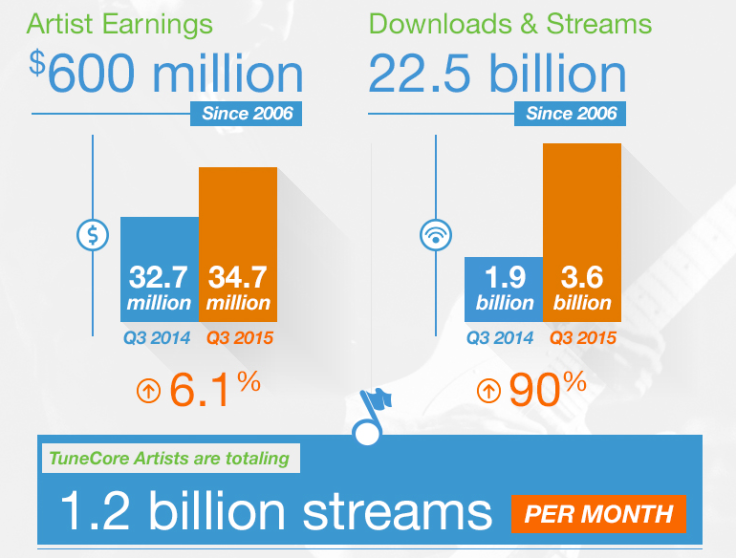Music Streams Skyrocket For Indie Distributor TuneCore, While Payments See Modest Rise

Music streams may be slowly growing the pie for artists, but they're also blowing around a lot of hot air. TuneCore, the largest independent music distributor in the United States, reported a 90 percent jump in streams and downloads during the third quarter and a 6.3 percent increase in artist payments.
In a news release Tuesday, TuneCore said its artists’ releases were streamed or downloaded 3.6 billion times in the third quarter of 2015, up from 1.9 billion in the same period last year. During that time, artist payments rose only $2 million, from $32.7 million in the third quarter of 2014 to $34.7 million this year. The company also reported healthy gains in international revenue and sync revenues, though it did not break raw numbers out.
“TuneCore is constantly striving to help artists around the world get their music heard and earn what they deserve,” TuneCore CEO Scott Ackerman said in a statement.

Unlike most music distribution companies, TuneCore does not take any portion of the money generated from the sale or stream or sync of its music. Instead, it charges its clients a flat fee to put its music on a variety of digital platforms and stores, including streaming services like Spotify and download stores like iTunes.
The continued adoption of streaming over downloads or physical purchases is the most likely explanation for the imbalance in TuneCore artists’ gains. Royalties for streams, whether they’re generated by on-demand services like Spotify or a radio-style service like Pandora or iHeartRadio, are far lower than the royalties paid out on downloads.
Yet the sheer scale of the growth occurring on the streaming side does appear to be growing the overall size of the pie for artists and rightsholders. Earlier this year, the performance rights organization BMI, which collects money on behalf of songwriters, announced that it had collected more than $1 billion in revenue for the first time, thanks to strong gains in music licensed for film and television as well as in digital revenues, which leaped 65 percent in 2014.
© Copyright IBTimes 2024. All rights reserved.











